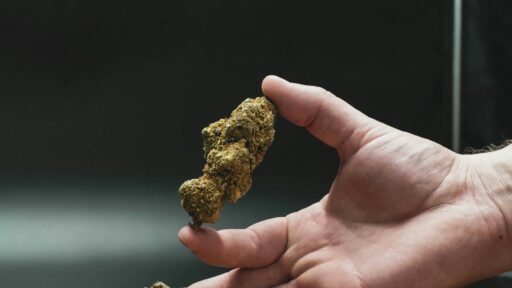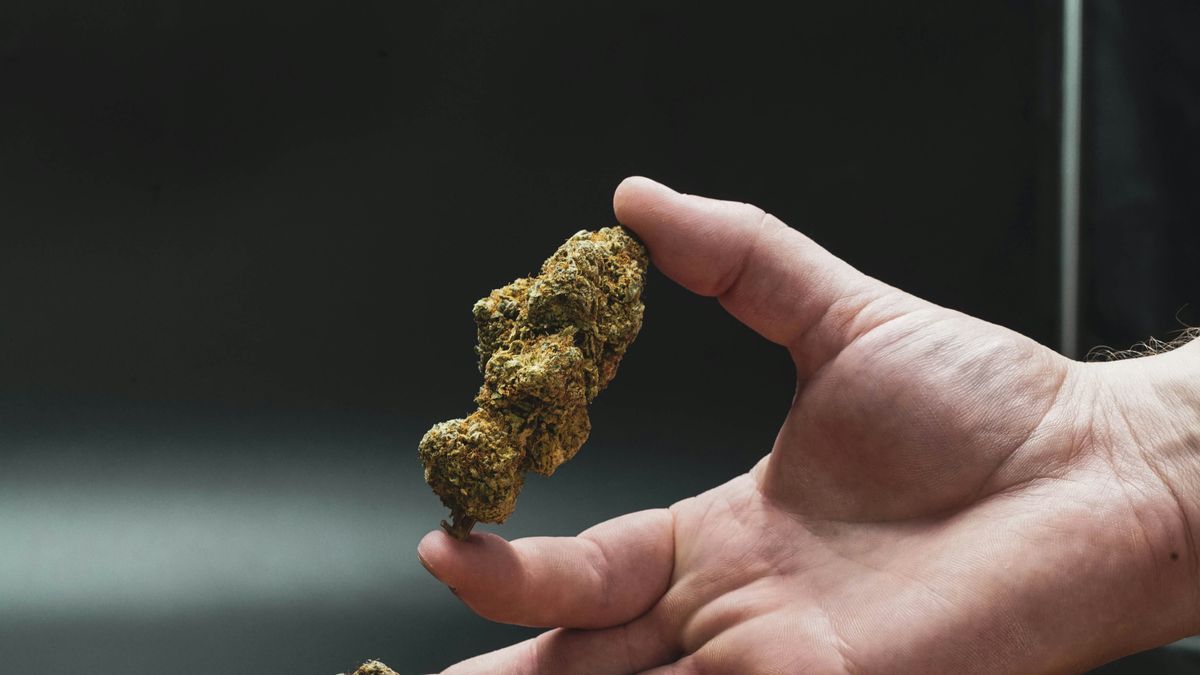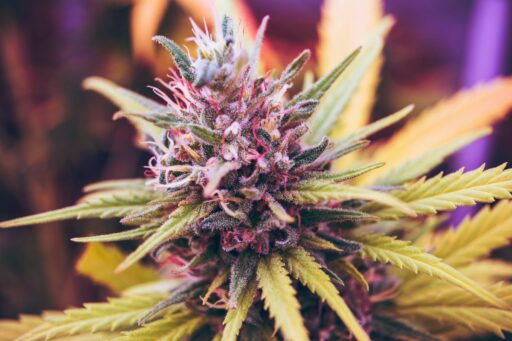The advent of medical marijuana as a therapeutic agent has marked a significant shift in the healthcare and legal landscapes of the United States. With its roots intertwining with ancient practices, the modern perspective on cannabis for medical purposes is evolving, driven by scientific research and changing public attitudes. This article delves into the complex world of medical marijuana, exploring its healing potential, legal intricacies, economic implications, and its place in historical and contemporary medicine.
Key Takeaways
- Medical marijuana is now legal in 40 U.S. states, reflecting a major shift in public sentiment and policy towards its use for therapeutic purposes.
- The therapeutic applications of medical marijuana are diverse, ranging from chronic pain and seizure management to cancer treatment and appetite stimulation.
- Navigating the legal landscape of medical marijuana is complex, with state-specific regulations and varying degrees of acceptance, even within conservative regions.
- The legalization of medical marijuana has had significant economic impacts, including job creation, agricultural development, and challenges related to consumer protection and the illegal trade.
- Modern research on medical marijuana is informed by historical medical practices, with a growing body of evidence supporting its benefits and potential for future therapeutic use.
The Evolution of Medical Marijuana Policy in the United States

The Shift in Public Sentiment
The landscape of medical marijuana in the United States has undergone a profound transformation, reflecting a broader change in societal attitudes. The once-stigmatized plant is now recognized for its potential health benefits, leading to a wave of policy reforms. Over the past decade, the public’s perception has shifted from skepticism to a more accepting stance on the therapeutic use of marijuana.
This evolution in thought is mirrored in the legislative domain, where medical marijuana has gained legal status in a majority of states. As of early 2023, medical marijuana is legal in 40 states, each with its own set of regulations. This patchwork of policies underscores the complexity of integrating medical marijuana into the healthcare and legal frameworks.
The growing acceptance of medical marijuana’s therapeutic properties has catalyzed a significant shift in both public sentiment and policy.
The following list highlights key milestones in the changing public sentiment toward medical marijuana:
- Increased awareness and understanding of marijuana’s medical applications
- Advocacy and testimonies from patients and medical professionals
- Media coverage and educational campaigns
- Legislative milestones and voter referendums
State-by-State Legalization
The United States has witnessed a dynamic shift in public sentiment and policy towards marijuana, particularly medical marijuana, over the past decade. With the growing acknowledgement of marijuana’s therapeutic properties in treating various health conditions, more states are legalizing marijuana for medical use. By early 2023, it is now legal in 40 states with varying degrees of regulation.
- A majority of U.S. states, around 80%, have embraced the legality of medical marijuana. These include states with significant population and political influence, such as New York, California, and Florida.
- A very limited number of states, specifically four – Georgia, Texas, Wisconsin, and Wyoming, have chosen a middle ground. They allow only the medical use of CBD with THC, a psychoactive compound found in cannabis. This signals a cautious, though not outright dismissive, approach to the substance.
Interestingly, despite the prevalence of conservative views on drug laws in Southern states, some like Alabama and South Carolina have legalized medical marijuana, indicating the growing acceptance of its medicinal benefits. This patchwork of policies creates a complex landscape for patients, healthcare providers, and businesses navigating the legalities of medical marijuana.
The state-by-state legalization mosaic underscores the need for clear information and resources for those seeking to understand the legal status of medical marijuana in their area. A website page about marijuana news with a WordPress post and comments, categorized as ‘Uncategorized’, often requires age verification to enter, reflecting the sensitive nature of the subject.
Regulatory Nuances Across Jurisdictions
The regulatory landscape for medical marijuana in the United States is a complex patchwork, with each state crafting its own set of rules and restrictions. The disparity in regulations reflects the diverse attitudes and policies towards medical cannabis across the country. For instance, while some states have fully embraced its legality, others maintain a cautious stance or outright prohibition.
- A majority of U.S. states have legalized medical marijuana, including influential states like New York, California, and Florida.
- A select few states, such as Georgia and Texas, permit only the use of CBD with THC for medical purposes, indicating a more conservative approach.
- States like Idaho and Kansas have stringent laws, with all forms of medical marijuana being illegal, showcasing the most restrictive policies.
The evolution of medical marijuana policy is ongoing, and as states continue to navigate this complex issue, the regulatory nuances become increasingly significant for patients, healthcare providers, and lawmakers alike.
Medical Marijuana’s Therapeutic Applications

Chronic Pain and Seizure Management
The therapeutic landscape of medical marijuana has been particularly transformative for individuals suffering from chronic pain and seizures. The relief provided by cannabis is not just symptomatic but also modifies disease progression in certain neurological conditions.
For chronic pain, medical marijuana offers an alternative to opioid medications, which carry a high risk of addiction and overdose. Patients report significant improvements in pain levels and quality of life when using cannabis-based treatments.
In the context of seizure management, the efficacy of medical marijuana, especially cannabidiol (CBD), has been substantiated through clinical trials. Children and adults with severe, drug-resistant epilepsy have experienced a reduction in seizure frequency, leading to the FDA approval of Epidiolex, a CBD-based medication.
The potential of medical marijuana in managing chronic pain and seizures is underscored by its ability to target the endocannabinoid system, which plays a crucial role in regulating pain, mood, and seizure threshold.
Here is a brief overview of the states with notable policies regarding medical marijuana for pain and seizure management:
Cancer Treatment and Appetite Stimulation
The therapeutic landscape of medical marijuana has seen promising developments in the realm of oncology. Cannabis has been recognized for its potential to alleviate chemotherapy-induced nausea and vomiting, a common and debilitating side effect of cancer treatment. Moreover, its role in appetite stimulation is particularly beneficial for patients who struggle with cancer-related anorexia or cachexia.
Medical marijuana’s active compounds, such as THC and CBD, interact with the body’s endocannabinoid system to help regulate nausea and stimulate appetite. This interaction can lead to improved caloric intake and quality of life for patients undergoing rigorous cancer therapies.
In addition to symptomatic relief, there is ongoing research into the direct anti-tumor effects of cannabinoids. While conclusive evidence is still forthcoming, preliminary studies suggest a potential for these compounds to inhibit cancer cell growth and proliferation.
- Symptomatic Relief
- Nausea and vomiting control
- Appetite enhancement
- Research Areas
- Anti-tumor properties
- Cell growth inhibition
Glaucoma Relief and Neuroprotective Effects
Medical marijuana has been recognized for its potential in treating glaucoma, one of the leading causes of blindness. Cannabinoids, the active compounds in marijuana, may play a role in reducing intraocular pressure (IOP), a key factor in glaucoma management. This therapeutic effect is attributed to the interaction of cannabinoids with the endocannabinoid system (ECS) within the eye.
Beyond glaucoma, marijuana’s neuroprotective properties are being explored. Studies suggest that cannabinoids could help in preserving neural structures and functions, which is crucial in conditions like Alzheimer’s and Parkinson’s disease. The neuroprotective effects are believed to stem from the anti-inflammatory and antioxidant properties of cannabinoids.
While the exact mechanisms are still under investigation, the potential benefits of cannabinoids for neuroprotection and glaucoma relief continue to drive research and interest in medical marijuana as a treatment option.
Here are some key points to consider regarding medical marijuana’s role in neuroprotection and glaucoma relief:
- Cannabinoids may reduce IOP in glaucoma patients.
- The neuroprotective effects could aid in the management of neurodegenerative diseases.
- Ongoing research is crucial to fully understand and harness these therapeutic properties.
Navigating the Legal Landscape of Medical Marijuana

Understanding State-Specific Regulations
The regulatory landscape of medical marijuana is as diverse as the United States itself. Each state has crafted its own set of rules governing the use, distribution, and cultivation of medical cannabis. This patchwork of regulations can be challenging for patients, healthcare providers, and businesses to navigate.
For instance, while medical cannabis is legal in 38 states, the nuances of these laws vary significantly. Some states have robust programs with comprehensive protections for patients, including anti-discrimination policies. Others may offer limited access through more restrictive measures, such as allowing only the use of CBD with low THC levels.
It’s essential for stakeholders to understand the specific regulations that apply in their state to ensure compliance and protect their rights.
Here’s a snapshot of the current state-specific regulations:
- Legal States: A majority, around 80%, including New York, California, and Florida.
- Middle Ground States: A few, like Georgia and Texas, permit only CBD with THC.
- Prohibitive States: A handful, such as Idaho and Kansas, maintain stringent laws against all forms of medical marijuana.
The Role of CBD and THC in Legislation
The legislative landscape of medical marijuana is intricately tied to the compounds found within the cannabis plant, primarily CBD (Cannabidiol) and THC (Tetrahydrocannabinol). CBD is often permitted for medical use even in states with more conservative drug laws, due to its non-psychoactive properties. In contrast, THC, known for its psychoactive effects, faces stricter regulations.
The FDA’s stance plays a crucial role in shaping these regulations. For instance, the FDA has determined that THC and CBD products cannot be classified as dietary supplements, influencing how they can be marketed and prescribed.
Here’s a snapshot of the current state-by-state stance on CBD and THC for medical use:
- States allowing medical marijuana (including THC): 40, plus the District of Columbia
- States with restricted medical use of CBD with THC: 4 (Georgia, Texas, Wisconsin, Wyoming)
- States with stringent laws against all forms of medical marijuana: 5 (Idaho, Indiana, Kansas, Nebraska, Tennessee)
The evolving policies reflect a complex interplay between medical research, public opinion, and legislative prudence. As the body of evidence supporting the therapeutic benefits of cannabis grows, so does the pressure on lawmakers to revisit existing statutes.
Challenges in States with Strict Prohibitions
In the landscape of American medical marijuana policy, a handful of states stand as outliers with their stringent prohibitions. Despite a national trend towards legalization, these states maintain a hardline stance against all forms of medical marijuana. This includes Idaho, Indiana, Kansas, Nebraska, and Tennessee, where not even CBD with low THC content is permitted. The challenges faced by patients and advocates in these regions are multifaceted, often involving complex legal battles and social stigma.
The legal challenges are not just theoretical. For instance, companies have been known to pose legal challenges to state regulations, as seen in Missouri, where voters had approved medical marijuana.
The following list highlights the states with a more moderate approach, allowing only the use of CBD with THC:
- Georgia
- Texas
- Wisconsin
- Wyoming
This cautious stance reflects a middle ground in policy, signaling a recognition of medicinal benefits while maintaining tight control. Interestingly, even in traditionally conservative Southern states, there is a shift, with places like Alabama and South Carolina legalizing medical marijuana, indicating a growing acceptance of its therapeutic potential.
The Impact of Medical Marijuana on Local Economies

Job Creation and Business Opportunities
The legalization of medical marijuana has catalyzed a surge in job creation and business opportunities. New roles are emerging across various sectors, from cultivation and distribution to research and retail. The industry’s growth is not only providing employment but also fostering entrepreneurship.
- Cultivation and harvesting
- Product manufacturing
- Dispensary operations
- Compliance and legal services
- Research and development
The economic ripple effect of this burgeoning sector extends beyond direct cannabis-related jobs, influencing ancillary markets and services.
The demand for skilled professionals in the medical marijuana industry is reflected in the increasing number of job postings and career development events. For instance, positions such as ‘Civil dialogue coordinator’ and links to job applications (e.g., rfbu.interviewexchange.com) highlight the diverse career paths now available. This expansion is a testament to the industry’s robust integration into the mainstream economy.
Agricultural Development and Resource Management
The cultivation of medical marijuana has ushered in a new era of agricultural development, with a focus on sustainability and resource management. As the industry grows, so does the need for responsible practices that safeguard environmental resources.
- Water Board Cannabis Cultivation Programs aim to regulate the impact of cultivation on water resources.
- Innovative farming techniques are being adopted to reduce water usage and minimize waste.
- Energy-efficient technologies are being implemented to lower the carbon footprint of cultivation facilities.
The integration of environmental considerations into the cannabis industry is not just beneficial for the planet; it’s a strategic business move that can lead to long-term success and community support.
The balance between economic growth and environmental stewardship is critical. As such, policies like the Cannabis Policy are in place to ensure that activities such as the diversion of water and waste discharge do not negatively impact the ecosystem.
Consumer Protection and Illegal Trade Dynamics
The legalization of medical marijuana has brought about significant changes in consumer protection and the dynamics of illegal trade. States are increasingly focused on safeguarding consumers from the risks associated with unregulated products. This includes ensuring the quality and safety of medical marijuana through rigorous testing and standardization.
While legal markets have been established, the presence of illegal sales remains a concern. In states where marijuana is legal, authorities are tasked with curtailing the illegal trade that competes with legitimate businesses. The illegal market not only evades taxes but also circumvents the safety regulations put in place to protect consumers.
The regulated medical marijuana industry aims to provide safer options for consumers than the illicit marijuana market or the unregulated intoxicating hemp-derived marketplace.
Efforts to combat illegal trade involve a combination of law enforcement actions and public education about the benefits of purchasing through legal channels. The industry’s impact on local resources, such as water and power, is also under scrutiny to ensure sustainable practices.
Medical Marijuana: A Modern Perspective on Ancient Practices

Historical Medical Philosophies and Cannabis
The use of cannabis for medicinal purposes is deeply rooted in history, with its applications being documented in various ancient cultures. While cannabis has a long history of medical use as an analgesic and antispasmodic agent, its integration into medical philosophies varied significantly across regions and eras.
In medieval times, the philosophy of medicine was heavily influenced by the prevailing cultural and religious beliefs. Healers and doctors of the period had their own conceptualizations of illness and health, often intertwining spiritual and physical aspects of well-being.
The understanding and application of cannabis within these historical medical frameworks reflect the complex interplay between societal norms, religious doctrines, and empirical observations of its effects.
The following list highlights the diverse perspectives on cannabis in ancient medical practices:
- In ancient Egypt, cannabis was used for its antiseptic properties.
- Traditional Chinese medicine utilized it for a variety of ailments, including as a surgical anesthetic.
- In India, it was incorporated into Ayurvedic practices, recognized for its therapeutic potential.
These early uses of cannabis set the stage for its modern therapeutic applications, suggesting a continuity of knowledge that has been adapted and refined over centuries.
Cultural Shifts in Perception of Medicinal Plants
The United States has experienced a profound transformation in the perception of medicinal plants, particularly cannabis, as part of a broader cultural shift. This change is not only reflected in policy but also in the collective consciousness of society. The evolution of traditional knowledge over the past fifty years has been marked by significant qualitative shifts in plant use, with some medicinal plants disappearing from common use, while others, like marijuana, have gained prominence.
- The growing acceptance of marijuana’s therapeutic properties
- The influence of historical medical philosophies
- The role of contemporary research in shaping perceptions
The discourse around medicinal plants is now more open and nuanced, acknowledging the complex interplay between traditional knowledge and modern medical practices.
This openness has led to a reevaluation of ancient practices within the context of contemporary healthcare, with marijuana at the forefront of this renaissance. The legal landscape, too, has adapted, with a majority of states now recognizing the medical benefits of marijuana, despite the persistence of conservative views on drug laws in some regions.
Contemporary Research and Future Directions
The landscape of medical marijuana research is rapidly evolving, with new research tools enhancing our understanding of its therapeutic potential. Clinicians and researchers are now equipped with more sophisticated methodologies to assess the efficacy of cannabis as a therapy, though data remains sparse.
- Exploration of genetic variations in cannabis strains
- Advancements in cannabinoid pharmacology
- Integration of big data and AI for patient outcomes
The integration of contemporary research tools with traditional knowledge could pave the way for breakthroughs in medical marijuana applications.
Future directions in research are poised to address the gaps in our knowledge, with a focus on long-term effects, optimal dosing, and the full spectrum of therapeutic benefits. The potential for medical marijuana to revolutionize treatment paradigms is immense, provided that research continues to advance and inform clinical practices.
Conclusion
As we conclude our exploration of the healing touch of medical marijuana, it is evident that the United States is undergoing a significant transformation in its approach to cannabis for therapeutic use. With medical marijuana now legal in the majority of states, there is a clear trend towards recognizing its potential benefits for a variety of health conditions. Despite the complexities and disparities in state laws, the overall direction points to a growing acceptance and integration of medical marijuana into healthcare practices. The conversation around marijuana continues to evolve, with ongoing research and dialogue addressing concerns about regulation, consumer protection, and the environmental impact of marijuana farming. As the nation grapples with these issues, the healing properties of medical marijuana remain a beacon of hope for many patients seeking relief, signaling a shift in societal attitudes towards this ancient yet ever-relevant plant.
Frequently Asked Questions
Is medical marijuana legal in all states of the United States?
As of early 2023, medical marijuana is legal in 40 states and the District of Columbia with varying degrees of regulation. However, there are still states with strict prohibitions or limited legality, allowing only medical use of CBD with THC.
What are some medical conditions that medical marijuana is used to treat?
Medical marijuana is used to treat a variety of health conditions including chronic pain, seizures, glaucoma, cancer-related symptoms, and to stimulate appetite in patients undergoing chemotherapy.
What are the differences in medical marijuana regulations across states?
Regulations vary widely from state to state, with some allowing broader use and easier access, while others have stricter controls on the types of conditions that qualify and the forms of marijuana that can be used.
How has the legalization of medical marijuana impacted local economies?
The legalization of medical marijuana has positively impacted local economies by creating jobs, generating business opportunities, stimulating agricultural development, and providing a new source of tax revenue.
Are there any states that have taken a middle ground regarding medical marijuana legality?
Yes, states like Georgia, Texas, Wisconsin, and Wyoming have taken a middle ground by allowing the medical use of CBD with THC, indicating a cautious approach to medical marijuana legality.
What are the implications of illegal marijuana trade in states where it is legal?
In states where marijuana is legal, the illegal trade can still impact consumer protection, resource management, and the effectiveness of regulations. Authorities are focused on ensuring consumer safety and minimizing illegal activities.





